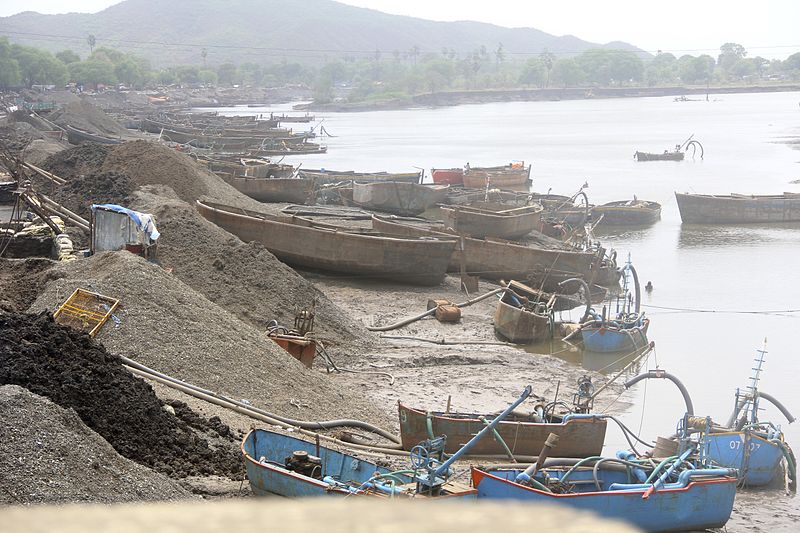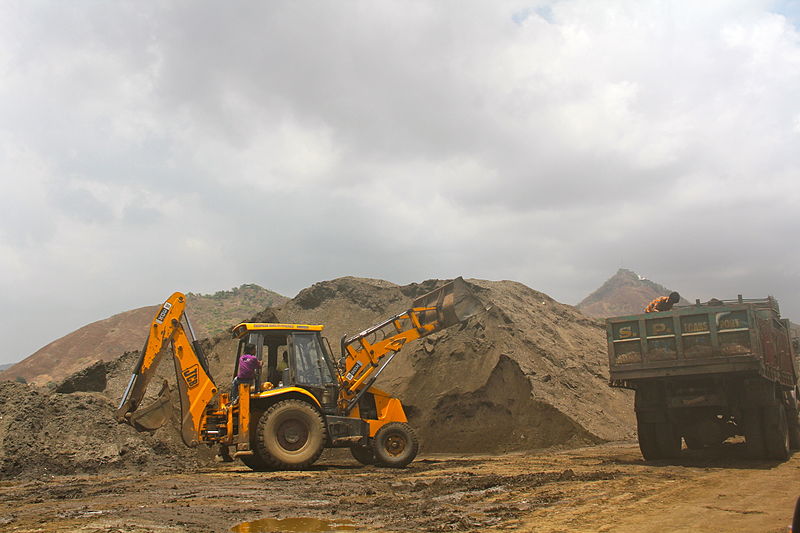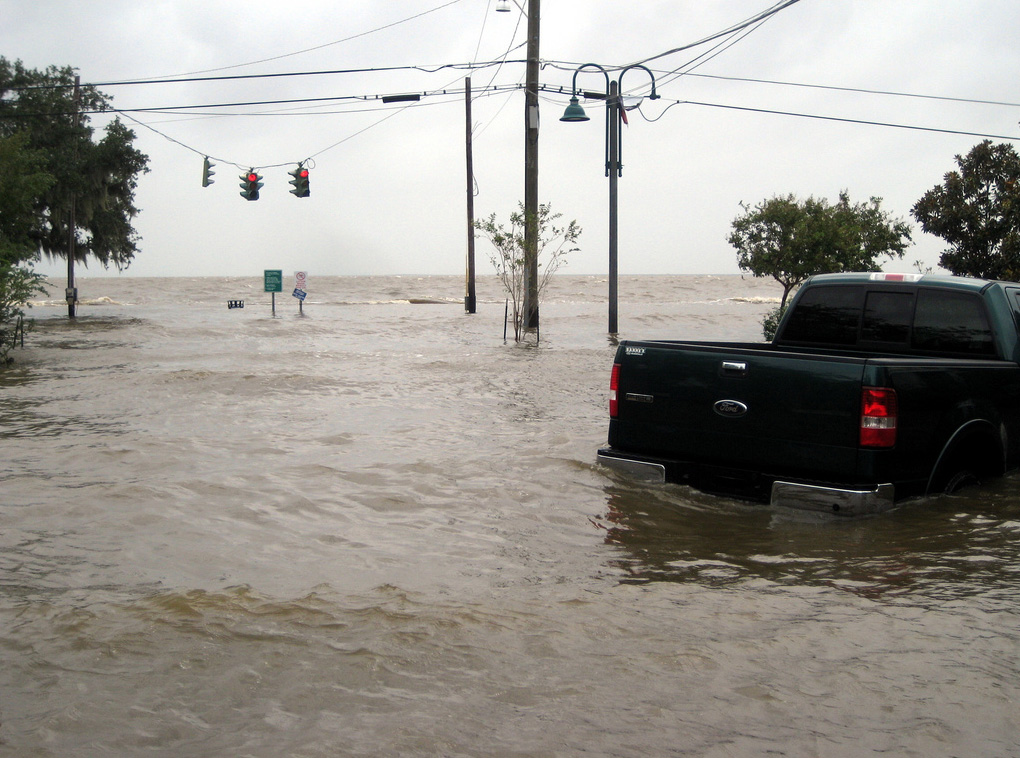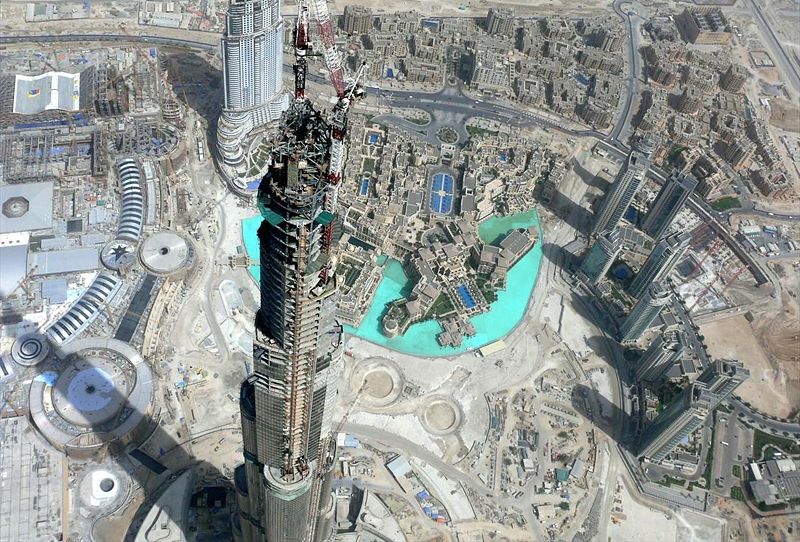
Tourism revival threatened by massive sand-mining (c) Tommy Trenchard/IRIN
It’s easy to take sand for granted – until it’s gone, that is. It is the second most important natural resource in the world after water, yet beaches are disappearing right from underneath our feet…
When most people think of sand, they think cheap, common and abundant. Sandy sediment doesn’t exactly fit the profile of a hot commodity. And yet, sand sustains livelihoods. It is imported and exported, like any other product. It makes large-scale industrial production possible. And like many other commodities, its traditional abundance isn’t what it used to be. Although it is the second most important natural resource in the world after water, says the Santa Aguila Foundation, the importance of sand to human society is widely underappreciated. But as our most beautiful beaches erode into the sea, conservationists are sounding the alarm. Sand and the fragile ecosystems it supports are in trouble, and beaches are disappearing right from underneath our feet.
Where Does Sand Come From?
Sand is a granular material composed of mineral and rock sediments. It is parts of the land, worn down into fine fragments over long periods of time. These fragments lie on the beaches, riverbeds and deserts of the world, where they provide vital stability and support for ecosystems. Sand is the result of currents, the cyclical movements of water and wind over time. These elements cause weathering, sifting and distributing minerals based on weight and density, modifying their size and appearance, creating the characteristic ore deposits that humans so desire. It takes millions of years for natural sand to be created from rock. The same natural processes that create rich gold deposits generate sand-filled beaches, berms and dunes. Like many other natural resources in which the environment has already done the productive labor, the sandy products of these weathering processes are economically valuable.
The Sand Crisis

By Sumaira Abdulali via Wikimedia Commons
Coastal sand faces threats from all directions. Sand mining, outright theft, urban sprawl, and the forces of climate change all play a role in its degradation. Much sand mining takes place away from the beach, in inland riverbeds and streams. Cheap freshwater sand is widely mined for its use in construction. Overextraction is common, with predictable consequences for riverine environments, including groundwater depletion, bank erosion and irrigation failures. Because river sand is the primary source of beach sand, riverbed mining throttles the natural, renewable supply of coastal sands. Across the world, quality river sand deposits have been depleted and the mining of coastal sand is ramping up. Sometimes the mining is legal; in other cases, sand is simply stolen in mysterious overnight heists that leave once-beautiful beaches pockmarked with ugly pits and uprooted vegetation. Sand theft is especially rampant in Caribbean nations like Jamaica and Grenada.
On Grenada’s Carriacou Island, the beach is receding by three feet a year due to criminal sand swipes, officials say. Other regional sediments are in peril; some two dozen Indonesian islands have vanished from the map in the last five years in the wake of sand piracy. With little oversight or investigation proffered, there is no apparent way to stop these environmental crimes. In southeast Asia, economic boom times have taxed the region’s coastlines like never before, fueling an enormous black market trade in smuggled sand. The multibillion-dollar underground trade in Malaysian sand, for example, has seen illegal excavations by Singaporean companies, acting out of a cutthroat desire for sand in an island nation that ran out a long time ago – yet seeks to expand its borders into the sea via ’land reclamation’ projects. Land reclamation involves using sand to extend the outer edges of landmasses, usually to accommodate economic expansion.
Legal and illegal sand mining cruelly stresses beaches that are already facing the greatest hazards to their integrity in recorded history. The expansion of economies over the last few centuries has dramatically eroded away fragile coastlines. Combined with long-term climate change driving rising sea levels, shoreline retreat has reached crisis levels unbeknownst to the average beach-goer.
Sand Mining

By Sumaira Abdulali via Wikimedia Commons
Much of the removal of sand from its natural habitat occurs well within the realm of legal, albeit permitted commerce. Sand mining is currently ongoing in 63 countries on 6 continents, says the Santa Aguila Foundation. Sand is used in industry, land reclamation, shoreline development and embankments. It’s a main ingredient in roads, bridges, dams and buildings. It is mined for tin, chromium, gold, zircon and titanium, and used to make glass, bricks and electronics. The list goes on. The construction boom occuring in many developing nations is a key driver of demand for sand, which is a raw component of concrete and cement. Today, more sand and gravel are extracted from the environment than any other solid material on the planet, according to the United Nations Environment Programme (UNEP). The stepped-up pace of extraction is growing faster than with any other ore, exponentially outpacing the rate of renewal. Mining is ongoing even in ‘protected’ areas. In the U.S., for instance, California’s Monterey Bay is the daily target of Mexican cement conglomerate Cemex SA, which dredges away two-and-a-half feet of the coastline annually, according to the U.S. Geological Survey (USGS). Further south near San Francisco, underwater sand mining on the Bay floor is driving erosion well above the site of extraction.
Ecosystem Services of Sand

Photo credit - Tobin, Flickr
If humanity consumes 40 billion tons of sand a year – a conservative estimate, says the UNEP – our collective appetite is twice the amount carried by all of the rivers in the world in a year. This is bad news for the environment. Beaches, dunes and their flora and fauna provide a variety of critical ecosystem services: wave-breaking, wind-breaking, carbon sequestration, groundwater filtration, soil erosion control, runoff control, atmospheric dust retention, nutrient cycling and decomposition – not to mention natural scenery for tourism. Sand provides critical shock absorption from seaborne natural disasters, but erosion brings the high tide level landward, reducing the height above sea level for key infrastructure. The changes becomes palpable when major storms hit, bringing powerful winds and waves. With reduced natural barriers like dunes to keep storm surges at bay, inland civilization lies exposed and coastal communities are easily flooded. Americans saw the consequences of erosion and rising sea levels painfully unfold in 2012 during Hurricane Sandy in New York City, which saw over 300,000 homes destroyed and $20 billion in damage. Flooding levels were historic, aggravated by decades of destabilized shores.
The Illusion of Plenty
A common response to eroded coastlines are ‘beach nourishment’ tactics. In one strategy, dune restoration is implemented to ward off the loss of life and property made more likely by denuded beaches. However, nourishment and restoration often involve dredging sand offshore or even importing sand – short-term and localized solutions that often end up sacrificing one source of sand to save another. Most people are unaware that many of the world’s popular tourist beaches – from Australia’s Gold Coast and the cities of South Florida to the Maldives, Waikiki, Malibu and Nantucket Island – exist solely because of extensive nourishment projects. These efforts have seen millions of dollars of sand pumped in from inland or offshore sites to sustain their familiar, valuable shorelines. It’s an open secret: over the last several decades, the planet’s pristine ’natural’ paradises have been quietly manufactured in order to sustain the illusion of plenty.
Extravagance and Scarcity

Sand importation is often a matter of desperation, but this is not always the case. One of the largest importers of sand is Dubai, a city bent on becoming a global tourist destination. Sand makes huge construction projects in the United Arab Emirate’s resource-hungry center of commerce possible – like the Burj Khalifa. Now the tallest building on Earth, the 2010 construction of the Burj required a mountainous 330,000 cubic meters of sand-based concrete. Dubai also features megastructures like the Palm Islands and World Islands, artificial archipelagoes made of sand dredged from the bottom of the Persian Gulf. These extravagant floating palaces are emblematic of the strain placed on sand resources, and further inflame local erosion and habitat extinction. Why do Middle Eastern nations like the UAE and Bahrain, with their immense deserts, import sand, anyway? More than 90 percent of Bahrain and 80 percent of the UAE are sandy desert! In fact, not all sand is created equal. Desert sand has hardly any economic value as a construction material because it is too fine and smooth. As a result, the vast, sand-rich deserts of the world can’t share the burden of provisioning with endangered beaches and river beds.
Future of Beaches Uncertain

Sandy beaches have proven as fragile as wetland marshes and rainforests. The removal of precious sand is making a mess of coastal ecosystems and threatens economic disaster as beachfront communities encounter the loss of ecological services once provided by well-sanded beaches and dunes. The consequences of uncontrolled sand extraction are devastating, yet the issue remains marginal in terms of policy and public awareness. Meanwhile, society’s dependence on sand is exploding, compounding a problem many people have never even heard of. As more developers look to coastal sand to satisfy humanity’s bottomless appetite for the vital natural resource and pillar of the global economy, the future of the world’s beaches hangs in the balance.